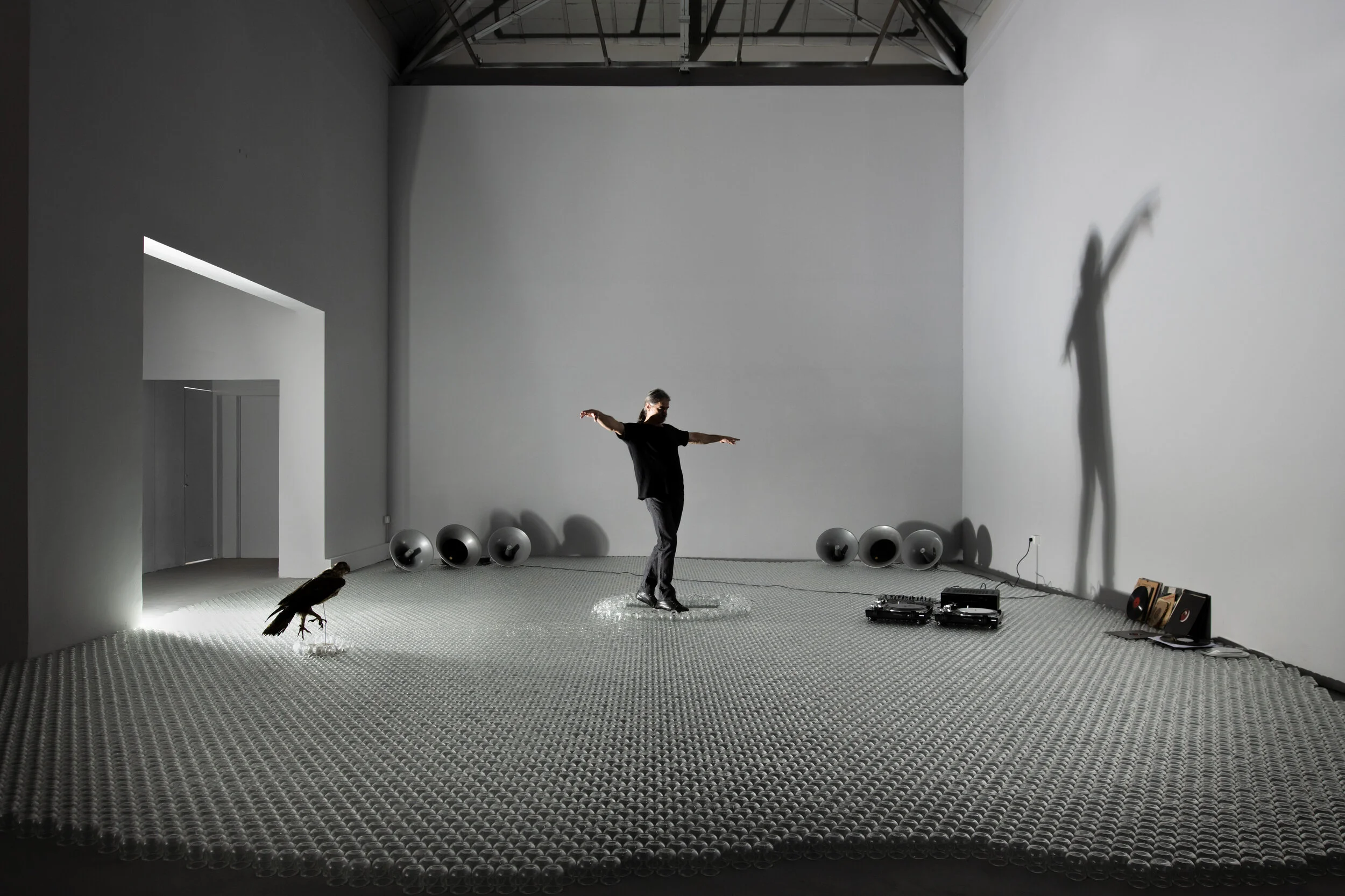Venice Biennale - How indisputable is the official historical record?
The three artists in Greece’s exhibition at Venice this year (as featured in the likes of ArtReview, KunstForum, Frieze and Flash Art) ask: what does history rewrite and what does it conceal?
Regular Venice Biennale-goers will notice that the National Pavilion of Greece looks slightly different from the outside this year. That’s because exhibition presented by Greece this year isn’t just inside the pavilion - it begins with the facade.
The artist Zafos Xagoraris has built a replica of a gate of the infamous military prison on the Greek island of Makronisos, and placed it over the front of the pavilion. This installation transports us back to the year 1948 - a year when, owing to the Greek Civil War, Greece did not present work at Venice. Instead, the Greek Pavilion was offered to the legendary American art collector Peggy Guggenheim, to show her modern art collection for the first time in Europe. At exactly the same time, displaced soldiers and civilians were forced to work in the Makronisos concentration camp, as part of a political and cultural reformation.
Zafos Xagoraris, The Concession, 2018–19, Outdoor installation, Photo by Ugo Carmeni
Peggy Guggenheim’s arrival in Venice is today considered pivotal for the city’s art landscape - but this was an equally pivotal time in Greece’s domestic history, for other, far more problematic, reasons. Xagoraris' work therefore suggest that two contradictory events occurring simultaneously have the power to define the collective memory of the land as well as the stories of people living apart.
Panos Charalambous, An Eagle Was Standing, 2019, Photo by Ugo Carmeni
Also at the Greek Pavilion this year is Panos Charalambous’ installation made of 20,000 drinking glasses, creating a transparent stage on the floor, upon which viewers are invited to walk, leaving behind their own echo. Two archival recordings from the artist’s vinyl collection accompany the sounds emerging from the glass installation. This multi-sensorial experience is a eulogy to the body’s ability to tell powerful stories - a Dionysian idea celebrated in many areas of Greek tradition and yet largely excluded from official historical narratives
Eva Stefani, Window, Only Men, 2019, Photo by Ugo Carmeni
Furthermore, Eva Stefani presents three video works - intimate portraits depicting the everyday, private lives of people considered marginal and therefore excluded from the official historical narrative. Window depicts a female sex worker sitting in a room, with her gaze directed at the viewer; in her silence and non-action, she signals the persistence of unrecorded history. Only Men portrays several middle-aged men, outlining a man’s world in an anti-heroic way, removed from the stereotypical depiction of masculinity. Mouth features archival footage of parades and national celebrations is set against intimate pieces of text written by Stefani herself, subversively intertwining private (female) and public (male) speech.



